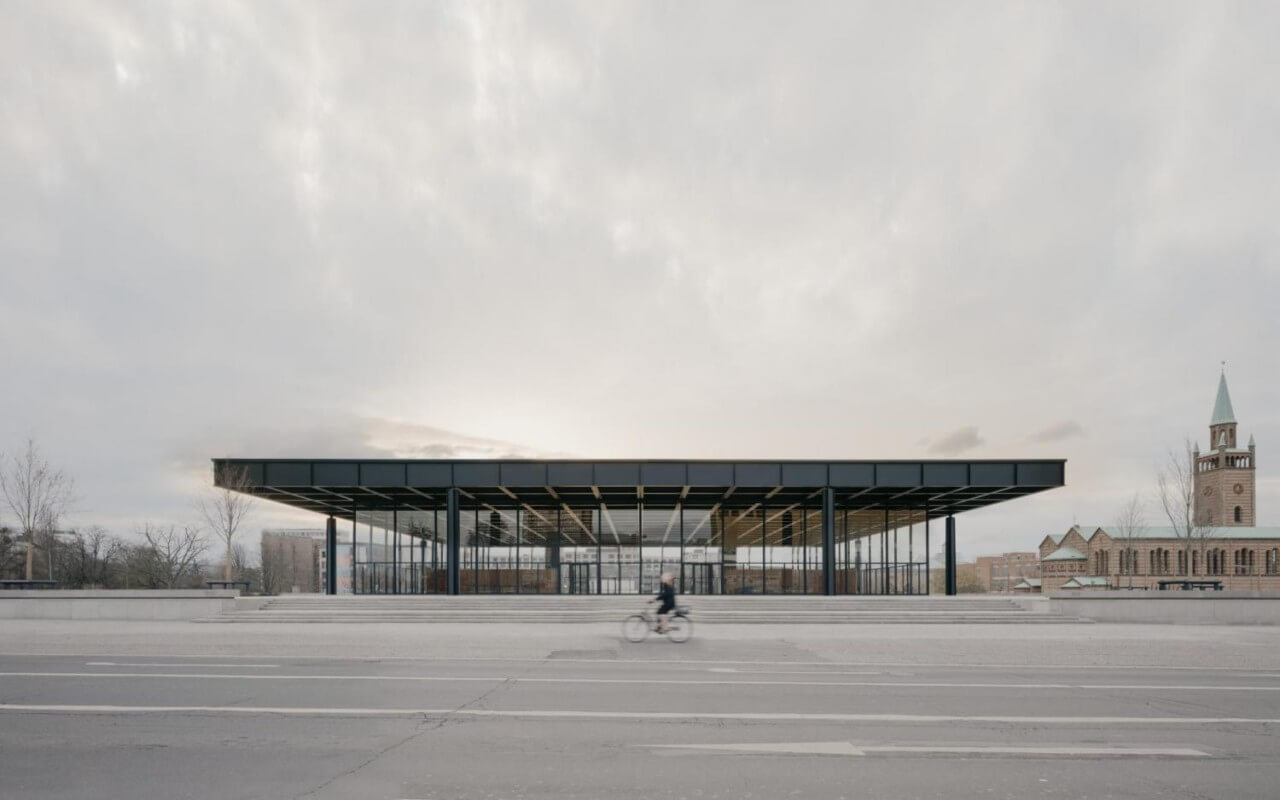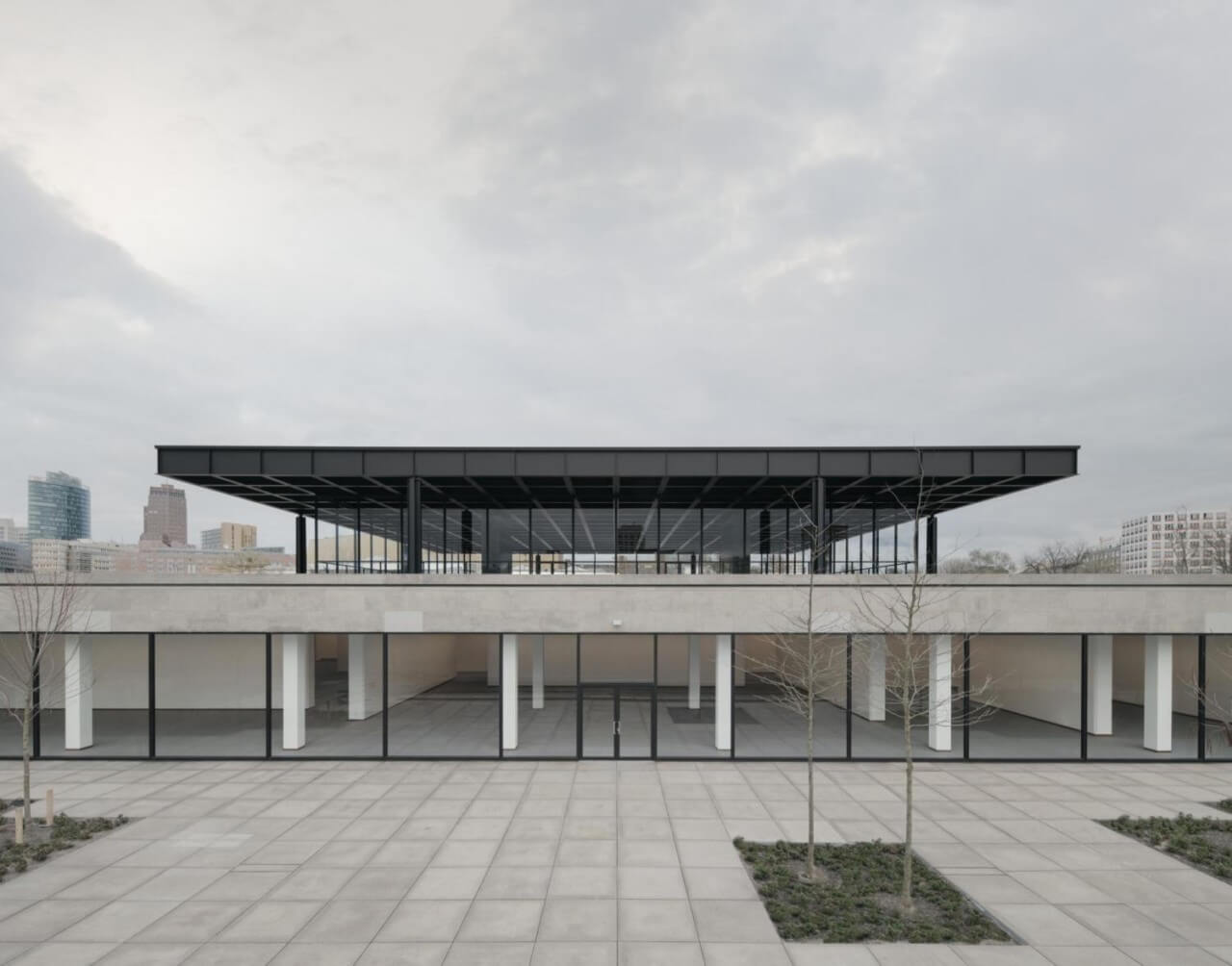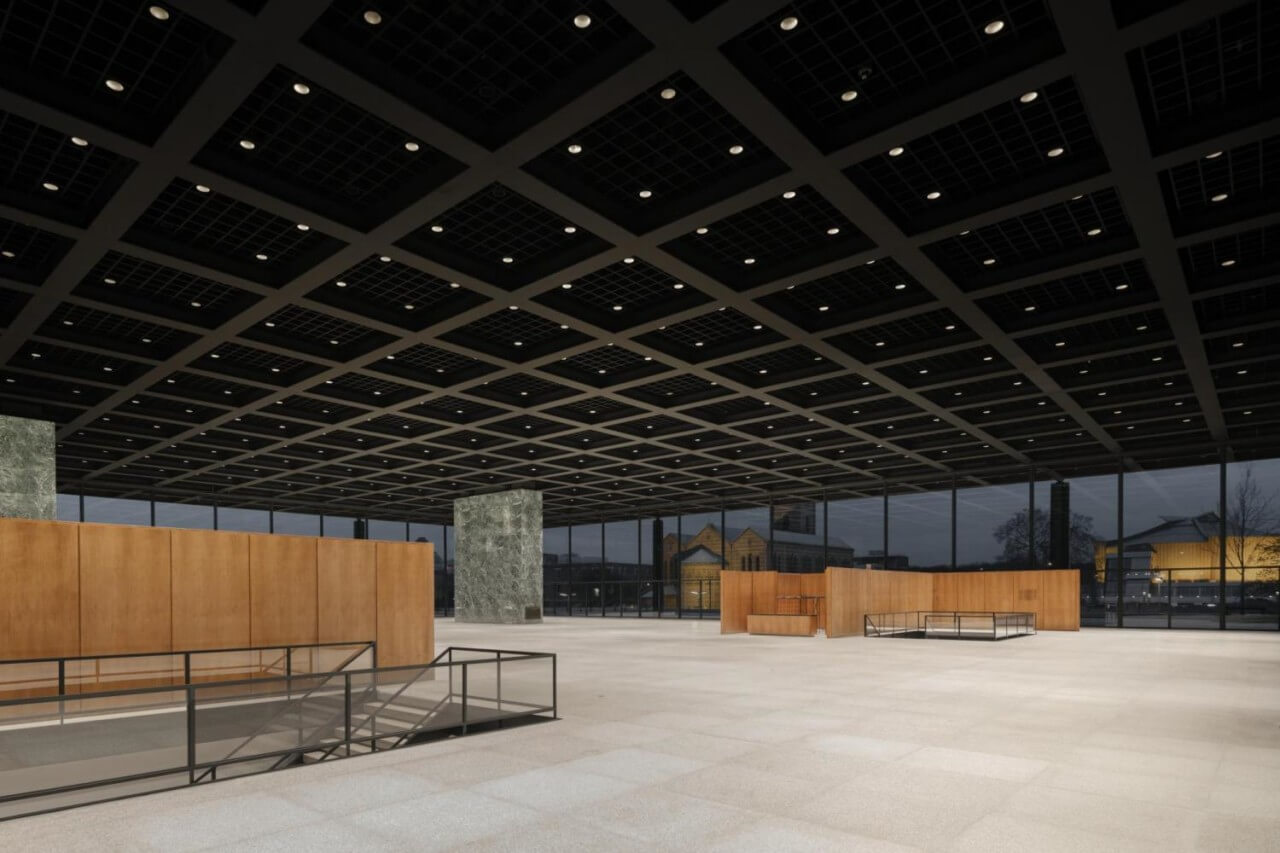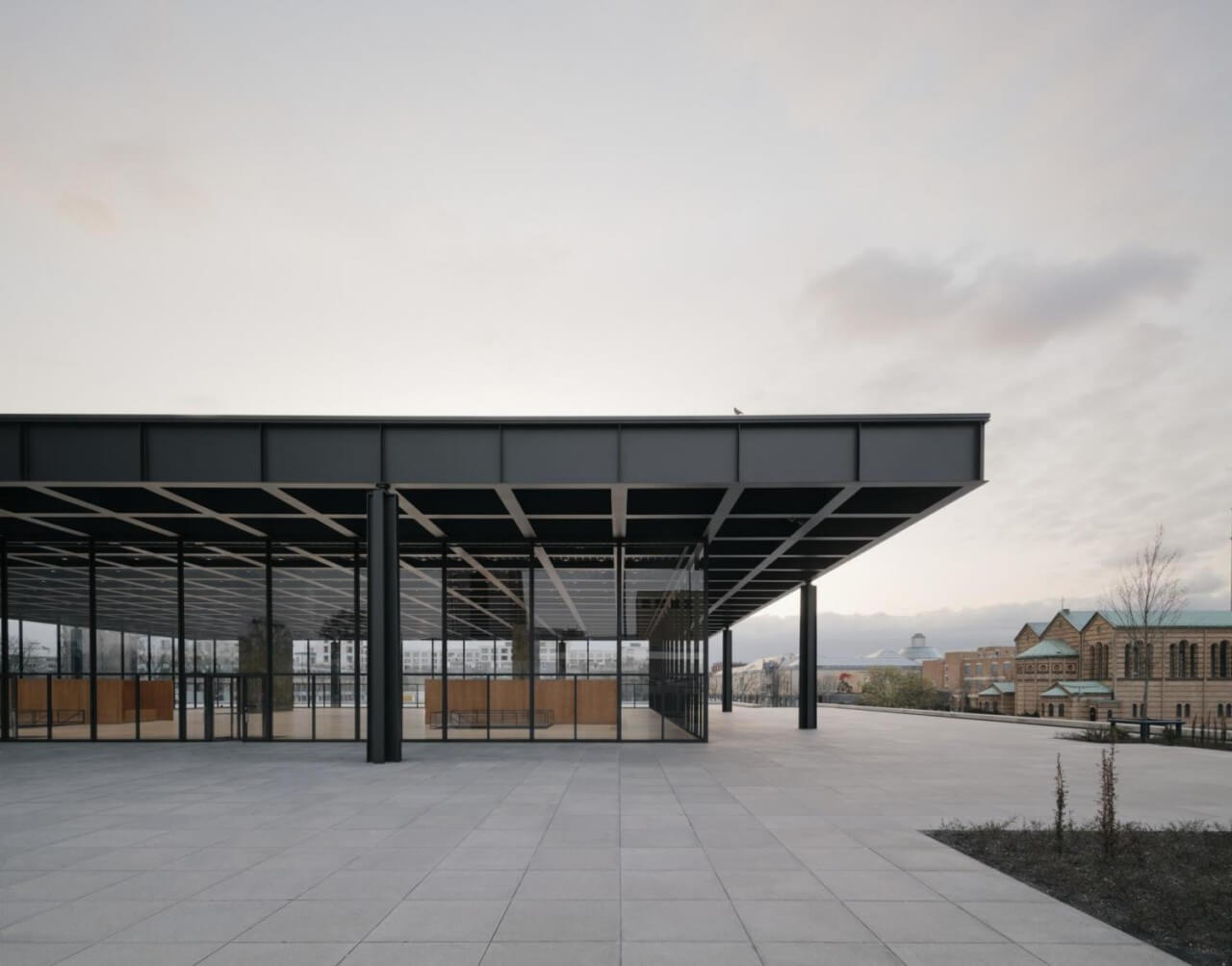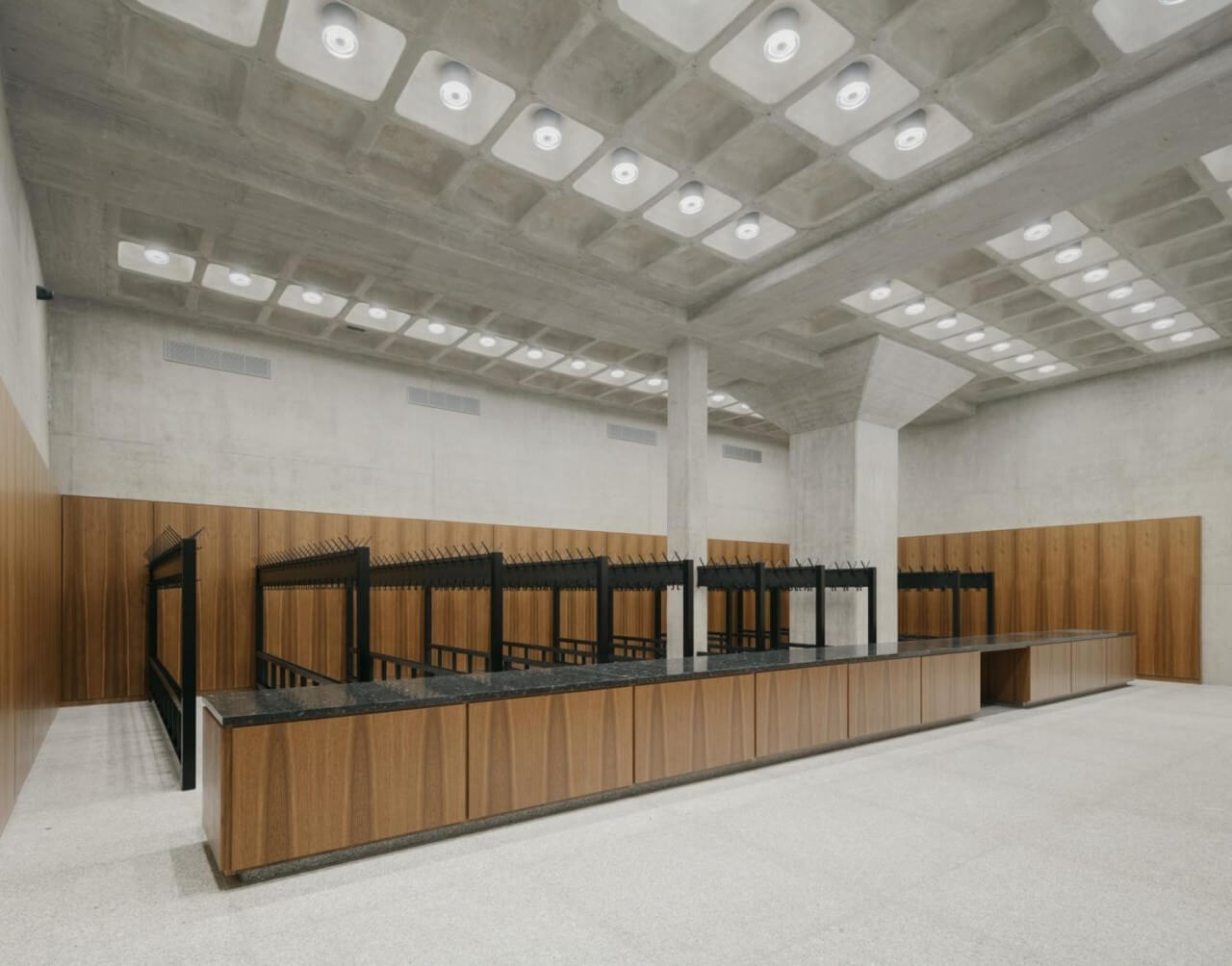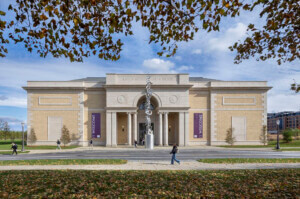As anticipated, the top-to-bottom refurbishment of Ludwig Mies van der Rohe’s Neue Nationalgalerie, a boxy bi-level landmark erected from granite, glass, concrete, and steel in the heart of Berlin’s Kulturforum cultural complex, wrapped up this month. Construction on the extensive and highly considerate overhaul of the museum, headed by the Berlin office of David Chipperfield Architects, kicked off in 2016 with design work commencing four years prior.
Like with many projects as of late, the roughly $124 million renovation, which is the first major modernization project to be undertaken at the museum, experienced some pandemic-related delays during the homestretch but remains on track to tentatively reopen to the public in late August with an exhibition of work by Alexander Calder.
Completed in 1968, the Neue Nationalgalerie is the modern art-focused arm of Berlin’s National Gallery and one of the most celebrated of Mies’s completed works in his native Germany. It’s also the only completed work in Germany designed by Mies following his emigration to the United States in 1937. Born in the city of Aachen in present-day North Rhine-Westphalia, Mies, a towering figure in the world of modernist architecture, died in his adopted home of Chicago just a year after the museum’s completion. He was 83.
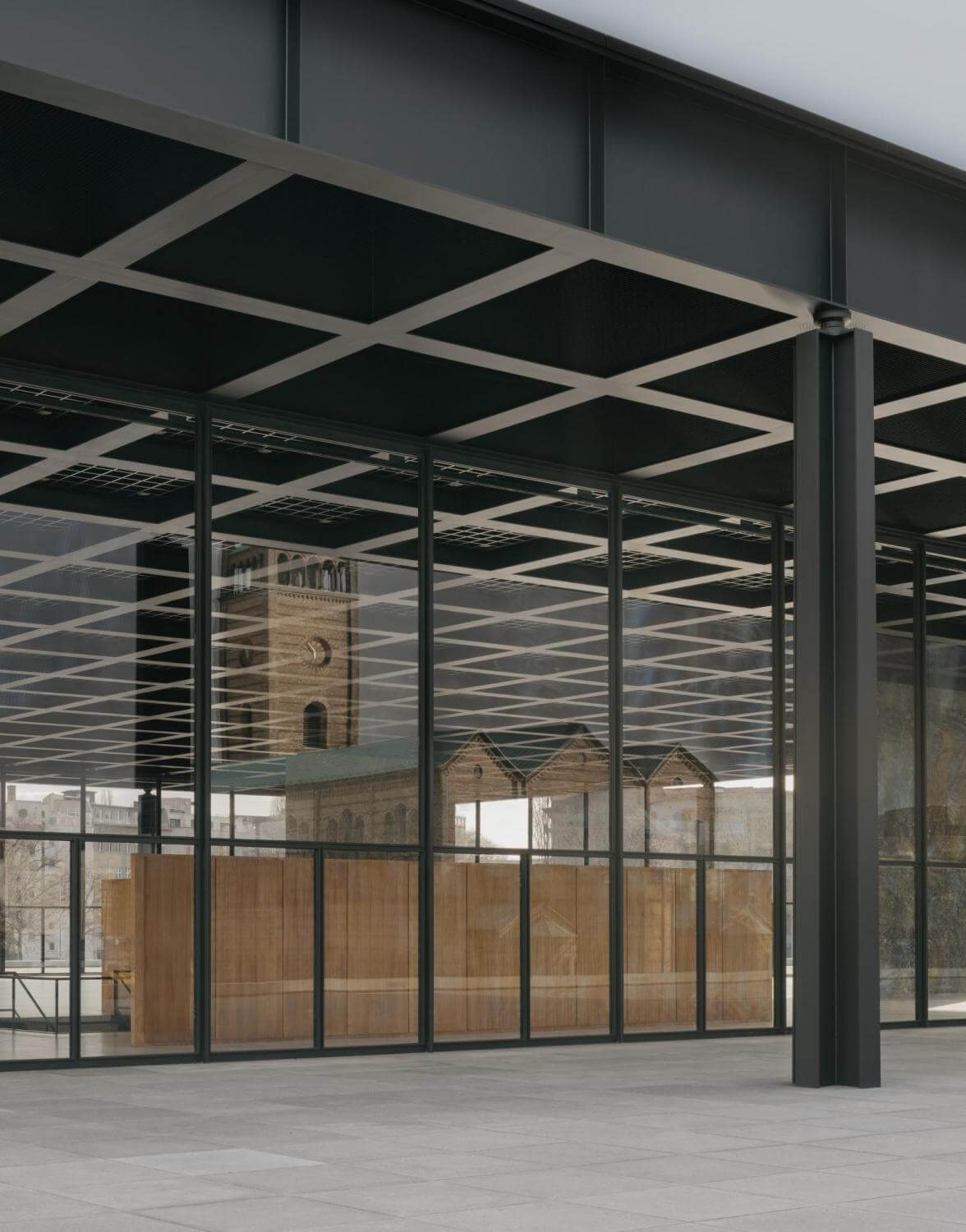
In a statement, Chipperfield remarked on the “surgical” nature of breathing new (and non-intrusive) into an “icon of twentieth-century architecture:”
“Taking apart a building of such unquestionable authority has been a strange experience but a privilege. The Neue Nationalgalerie is a touchstone for myself and many other architects. Seeing behind its exterior has revealed both its genius and its flaws, but overall it has only deepened my admiration for Mies’ vision. Our work was therefore surgical in nature, addressing technical issues to protect this vision. Certainly carrying out such a task in a building that leaves no place to hide is daunting, but we hope to have returned this beloved patient seemingly untouched except for it running more smoothly.”
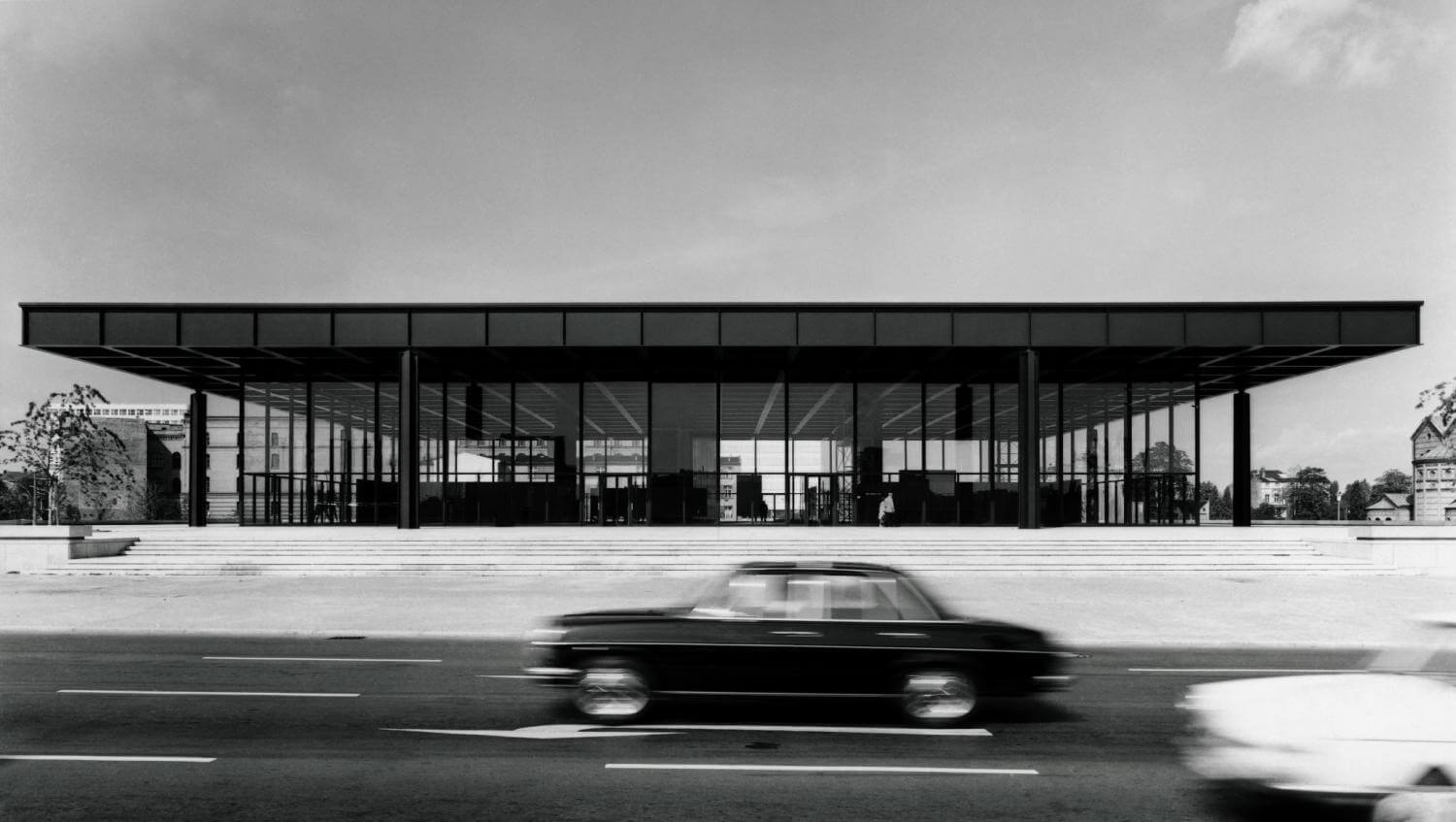
The conservation-minded work overseen by Chipperfield’s Berlin office and the larger project team was, as mentioned, extensive and touched down on numerous aspects of the nearly 150,000-square-foot building, from the restoration of the dramatically cantilevered roof’s steel framework to the installation of over 17,000 square feet of new glass enveloping the exhibition/entrance hall, to the careful cleaning of the granite facade slabs, to a total lighting and HVAC upgrade geared to lower the aging building’s environmental footprint. Accessibility was also improved and public amenities including the cafe, cloakroom, museum shop, and restrooms have all been modernized. Outside, the exterior public areas have also been respectfully revamped, including the museum’s famed sculpture garden, also a Miesian creation.
In total, 35,000 original building components, including the stone cladding and all interior fittings, were dismantled and then restored (and modified in some cases) before being reinstalled in their “precise original positions,” as the firm noted.
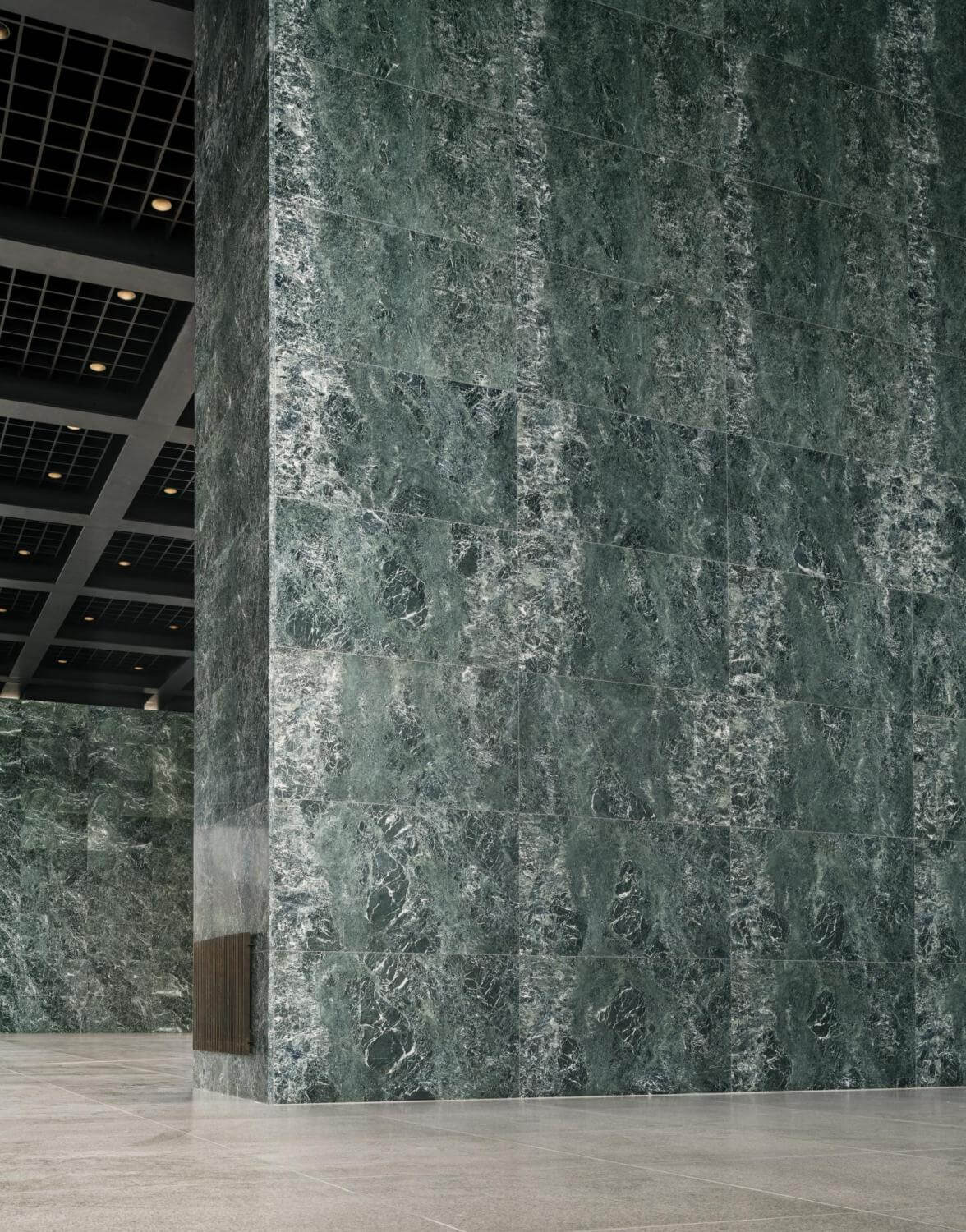
As Martin Reichert, partner and managing director of David Chipperfield Architects Berlin made perfectly clear, visitors who return to the museum later this summer expecting something obviously and shockingly “new” might be a touch disappointed as the project focused on the meticulous restoration of the building, not major expansion or repositioning work.
“There was no promise of new splendour, no promise of new qualities, no reinterpretation or aesthetic upgrade, but merely the refurbishment of the last work by Ludwig Mies van der Rohe in line with accepted conservation practices,” said Reichert.
He added: “This project was exceptional in many respects: the gravity with which even seemingly marginal conservation issues were discussed, the high degree of appreciation for the material building fabric, the differentiated assessment of the various interests and concerns as well as the explicit message that after the completion of the building works there is nothing more to see than a major work of late modernism, that has been restored with great care.”

An essay penned by Reichert titled “Monument preservation and renewal concept,” taken from the forthcoming book Neue Nationalgalerie Berlin: Refurbishment of an Architectural Icon, further details the herculean effort undertaken by Chipperfield Architects and its collaborators to revert the Neue Nationalgalerie back to its original state while also enhancing it for the future.
The firm explains that “unavoidable interventions to the original fabric” had to be carried out. Although these “essential additions remain subordinate to the existing design of the building, they are nevertheless discreetly legible as contemporary elements.”
“The refurbishment project does not represent a new interpretation, but rather a respectful repair of this landmark building of the International Style,” added the firm.
Joining the sizable team from Chipperfield Architects were BAL Bauplanungs und Steuerungs GmbH (executive architect), Pro Denkmal GmbH (restoration consultant), GSE Ingenieurgesellschaft mbH Saar, Enseleit und Partner (structural engineer), DS-Plan (facade consultant), TOPOS Stadtplanung Landschaftsplanung Stadtforschung (landscape architect), and others.
More information on the painstaking rehabilitation project and on the museum’s upcoming opening can be found on the Neue Nationalgalerie website.






